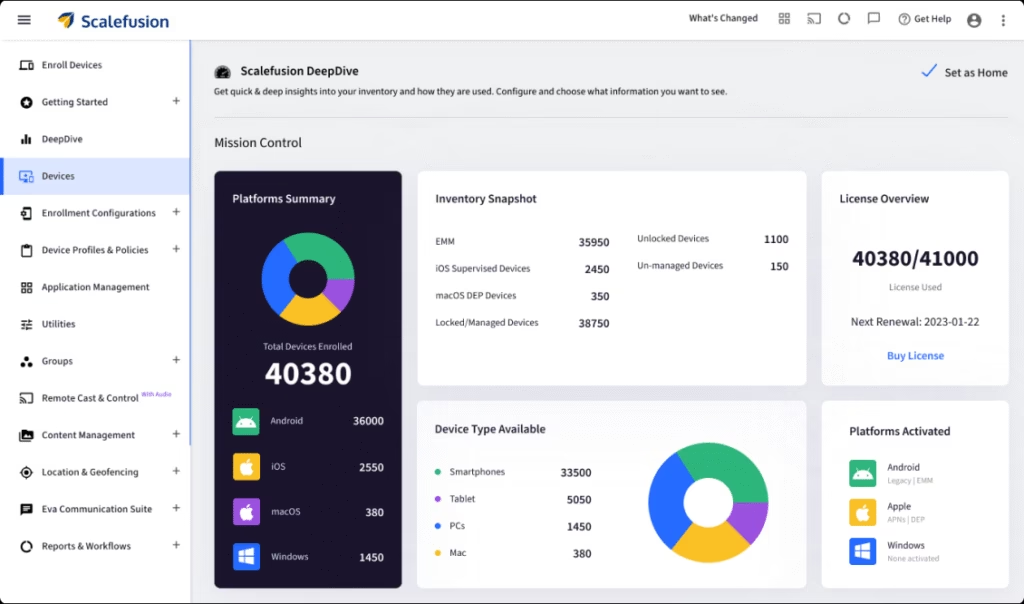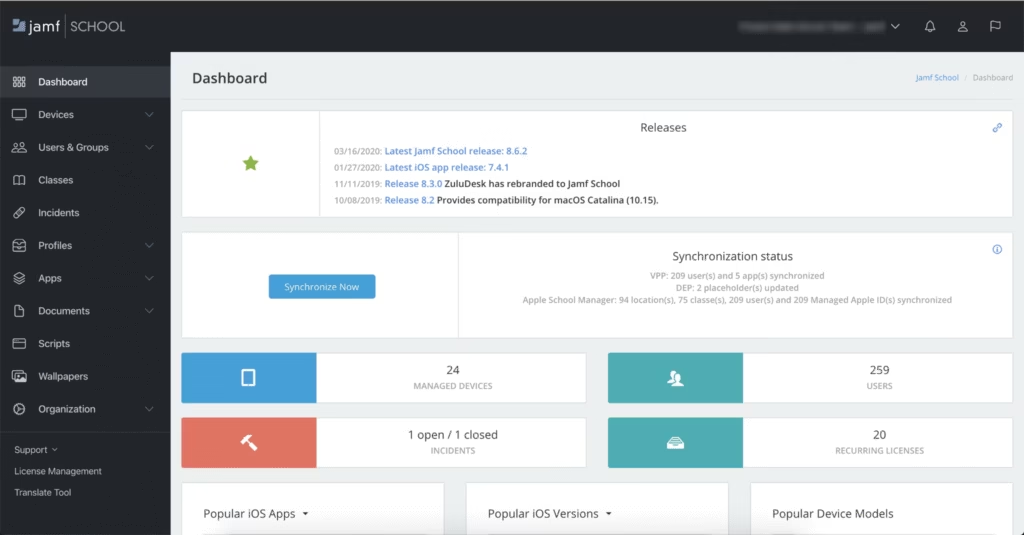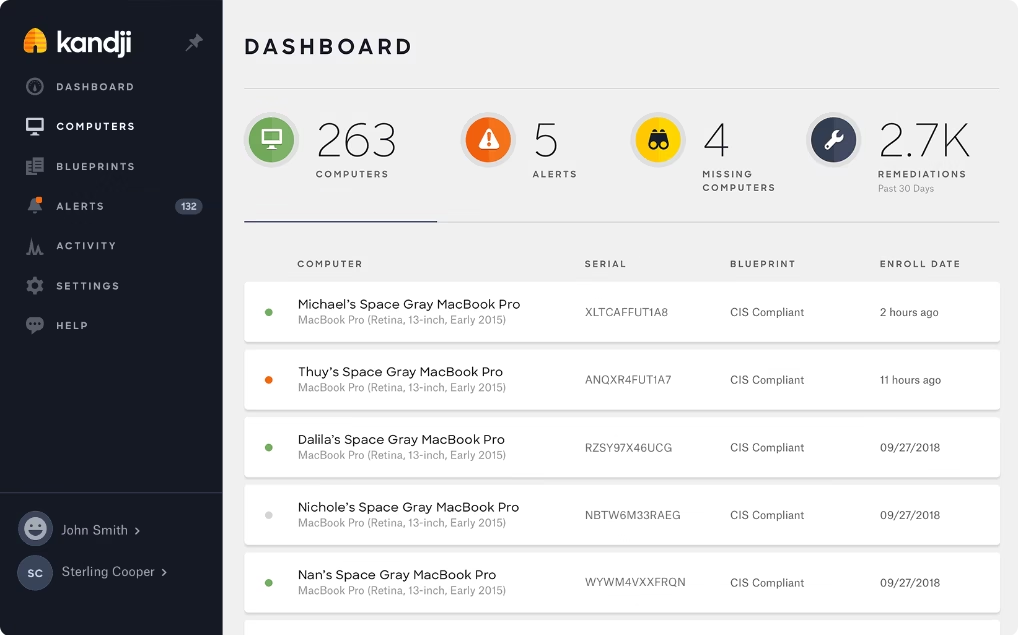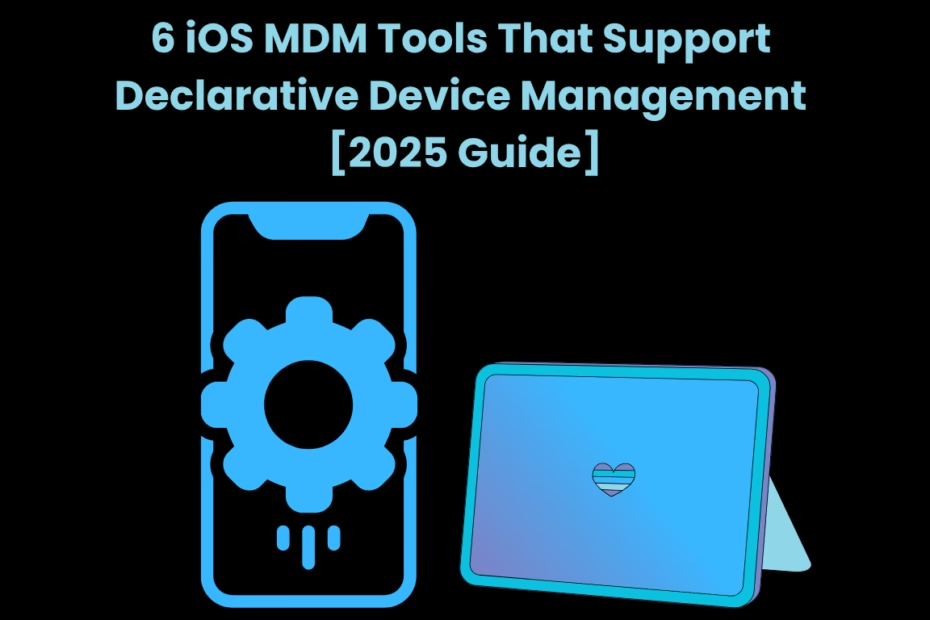Traditionally, managing iOS devices relied on a reactive approach. MDM servers would push instructions, and devices would poll for updates periodically, creating latency and administrative overhead. But with Apple’s shift to Declarative Device Management (DDM), the landscape has changed.
In 2025, DDM isn’t just a technical improvement—it’s a strategic upgrade. Apple is doubling down on DDM for iOS and iPadOS to streamline remote management, reduce bandwidth usage, and make compliance instant. By empowering devices to enforce policies proactively and autonomously, DDM reduces server loads and improves the user experience.
If you’re looking to future-proof your Apple device fleet, choosing an MDM solution that supports declarative management is critical. Below, we profile six iOS MDM tools that lead the pack with robust DDM support.
What Is Declarative Device Management?
Declarative Device Management is Apple’s modern take on how iOS, iPadOS, and macOS devices are configured and maintained. Unlike traditional MDM, which is command-based and reactive, DDM enables devices to act proactively using declarations and conditions (called “predicates”).
Instead of waiting to be told what to do, the device knows what to enforce—improving speed, privacy, and reliability.
Key benefits:
- Reduced check-ins: Devices report status instead of polling continuously.
- Instant compliance: Policies activate the moment conditions are met.
- Better performance: Lower server load, improved battery life, and reduced bandwidth usage.
Apple began introducing DDM with iOS 15, but full capabilities matured with iOS 17 and later. In 2025, DDM is essential for scalable, compliant iOS device management.
1. Scalefusion iOS MDM

Scalefusion has emerged as an agile leader in cross-platform MDM, and its support for Declarative Device Management on iOS/iPadOS is a significant reason why. The platform enables admins to create declarative configurations that auto-enforce compliance, restrictions, and settings with minimal overhead.
It shines in SMB and education environments where time and IT resources are limited. Scalefusion supports zero-touch enrollment, integrates tightly with Apple Business Manager, and includes strong compliance reporting tools for regulated industries.
What truly makes Scalefusion stand out is its ability to manage iOS alongside Android, Windows, and macOS, making it a smart choice for hybrid fleets.
Best for: SMBs, schools, and organizations needing multi-OS support with modern iOS compliance.
2. Jamf Pro

Jamf Pro remains the go-to MDM for Apple-first enterprises, and its declarative management integration is robust. Jamf implements DDM to manage device configurations and security settings more efficiently while reducing the need for manual remediation.
Jamf Pro is especially strong in healthcare, government, and education due to its layered ecosystem, including Jamf Trust and Jamf Protect, which work in tandem with DDM to enhance endpoint security and privacy.
Its advanced scripting, telemetry, and identity integrations make Jamf a powerhouse for organizations with complex Apple-only deployments.
Best for: Large Apple-centric environments with strict compliance and identity control requirements.
3. Kandji

Kandji combines automation and declarative management to deliver a fully hands-off iOS MDM experience. Its Blueprint system uses DDM principles to automatically configure and monitor devices, ensuring policy enforcement without user or admin intervention.
This automation makes it ideal for remote-first companies where IT needs to maintain control without constant check-ins or manual support. DDM-backed features like automatic compliance checks and self-healing remediation make Kandji a future-ready choice.
Best for: Remote and hybrid workplaces prioritizing zero-touch compliance and automation.
4. Mosyle Business
Mosyle Business integrates MDM and endpoint security into one unified platform—and DDM is central to that design. With declarative support for restrictions, profiles, and monitoring, Mosyle helps businesses simplify iOS management while reinforcing security.
Its added endpoint tools, such as malware protection and web filtering, make it more than an MDM—it’s an Apple-focused security suite. It scales well for both K–12 institutions and small to mid-sized businesses.
Best for: Schools and businesses seeking a security-first Apple MDM platform with baked-in DDM.
5. Addigy
Addigy is popular with managed service providers (MSPs) and hybrid Apple fleets. It was quick to adopt DDM across iOS and macOS, allowing IT teams to create proactive device policies that are enforced natively on devices without needing constant interaction.
Its multi-tenant architecture, real-time alerts, and custom scripting features allow MSPs and IT admins to manage dozens of client environments with confidence. Addigy’s DDM integration makes it lighter, faster, and more autonomous.
Best for: MSPs and IT teams managing multiple Apple deployments with cross-platform visibility.
6. SimpleMDM
True to its name, SimpleMDM offers a developer-friendly platform that supports declarative configurations using Apple’s latest APIs. It strips out unnecessary complexity, giving tech-savvy teams the tools to build lightweight but powerful iOS management workflows.
Its emphasis on scripting, custom APIs, and app management makes it ideal for startups and engineering-led organizations that want more control without enterprise bloat.
Best for: Startups and technical teams needing flexible, API-driven declarative MDM for iOS.
Why Declarative MDM Is the Future of iOS Management
Apple is designing for a world where devices can manage themselves. Declarative MDM fits into this vision perfectly. With configurations that activate based on real-time status, IT teams can shift from micromanagement to intelligent automation.
It reduces the “back-and-forth” between server and device, minimizes end-user disruption, and strengthens compliance. For industries like healthcare, finance, or government—where data security and policy enforcement are non-negotiable—declarative management offers the speed and confidence traditional MDM never could.
As Apple continues enhancing DDM across iOS and macOS, support for it is quickly becoming a benchmark of a modern MDM solution.
How to Choose the Right DDM-Compatible MDM
When deciding which DDM-enabled MDM tool is right for your organization, consider the following:
- Organization size: Larger companies may benefit from enterprise platforms like Jamf or Kandji, while SMBs can lean into Scalefusion or Mosyle.
- Platform mix: If managing more than just Apple, choose a cross-platform tool like Scalefusion or Addigy.
- Level of automation: Prefer hands-off? Kandji is ideal. Need more control? SimpleMDM or Jamf fits.
- Compliance needs: For industries with high regulatory pressure, Jamf, Scalefusion, and Mosyle offer deeper integrations.
Most vendors offer free trials—take advantage and pilot before committing.
Real-World Impact: How DDM Transforms IT Operations
Declarative Device Management isn’t just a buzzword—it’s already transforming how IT departments operate. For example, in education, DDM enables schools to instantly reconfigure iPads during testing season, applying lockdown policies only when specific conditions are met. This means fewer disruptions and faster classroom readiness.
In enterprise environments, security teams appreciate that DDM allows devices to self-enforce security policies—like passcode strength or Wi-Fi restrictions—without waiting on MDM commands. This accelerates compliance checks and helps prevent breaches before they happen.
From a helpdesk perspective, DDM reduces tickets related to policy sync delays. Because devices now manage themselves based on live conditions, IT teams spend less time chasing down non-compliant endpoints. DDM’s efficiency also means fewer repeated commands clogging up the network, reducing backend infrastructure costs.
Ultimately, DDM gives time back to IT. Instead of constantly reacting, teams can focus on strategic initiatives like scaling, automation, and employee experience—making device management smarter, smoother, and far more sustainable.
Read More: 10 Latest Technology Trends You Can’t Miss in 2025
Conclusion
Declarative Device Management is the new standard for iOS fleet control in 2025. It brings automation, autonomy, and efficiency to a process once burdened by manual oversight and lag.
Whether you’re managing five iPads or five thousand, choosing an MDM that embraces DDM ensures your environment is scalable, secure, and future-ready. From the power of Kandji’s blueprints to the developer control of SimpleMDM, the options are diverse—but all moving toward the same goal: smarter device management.

